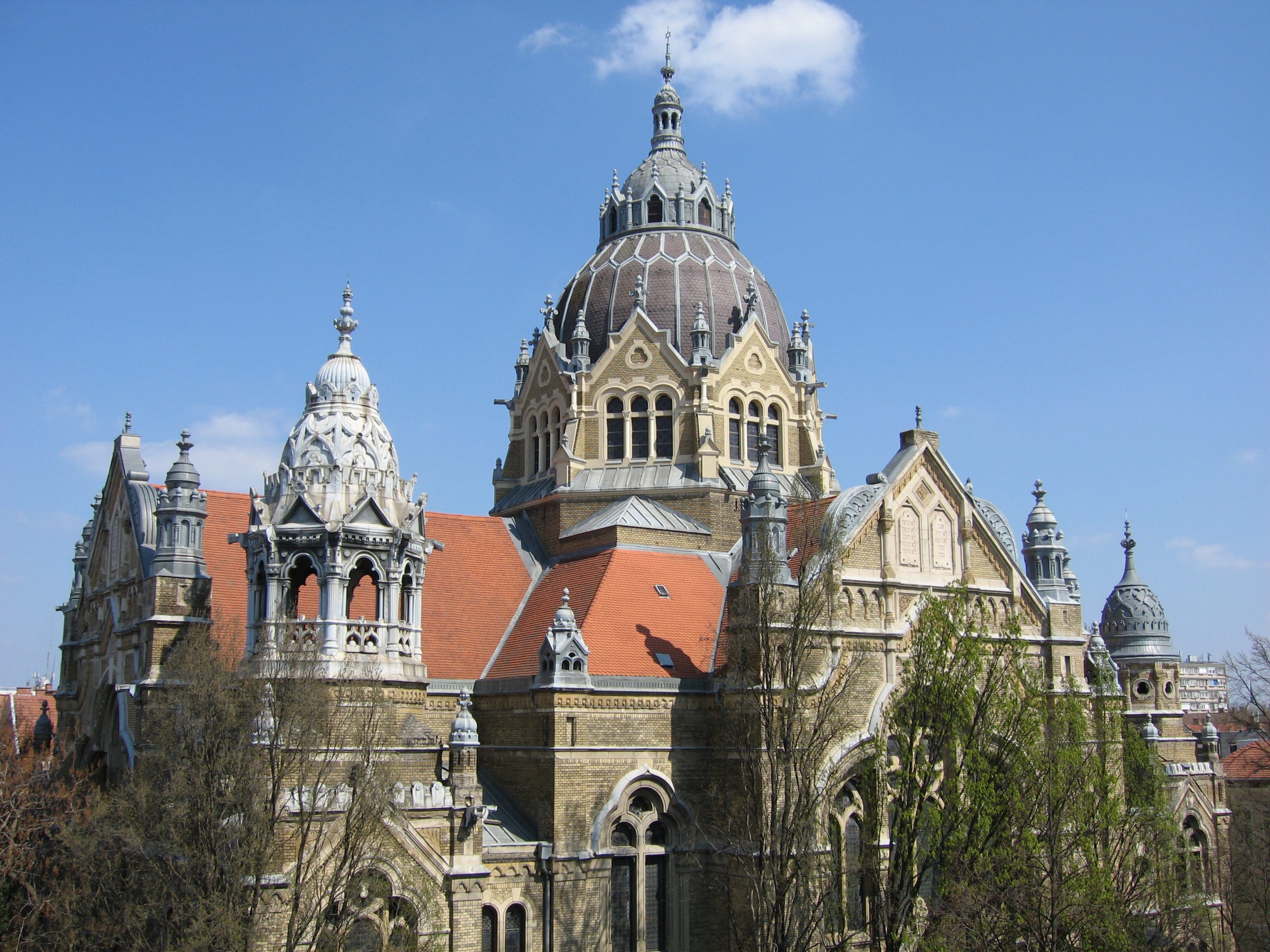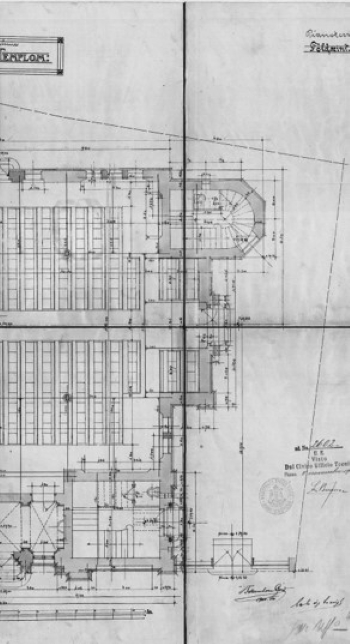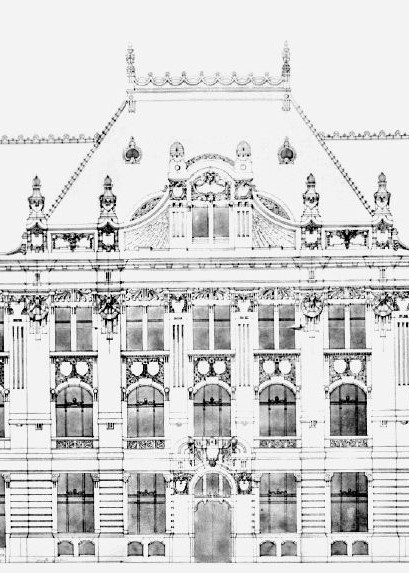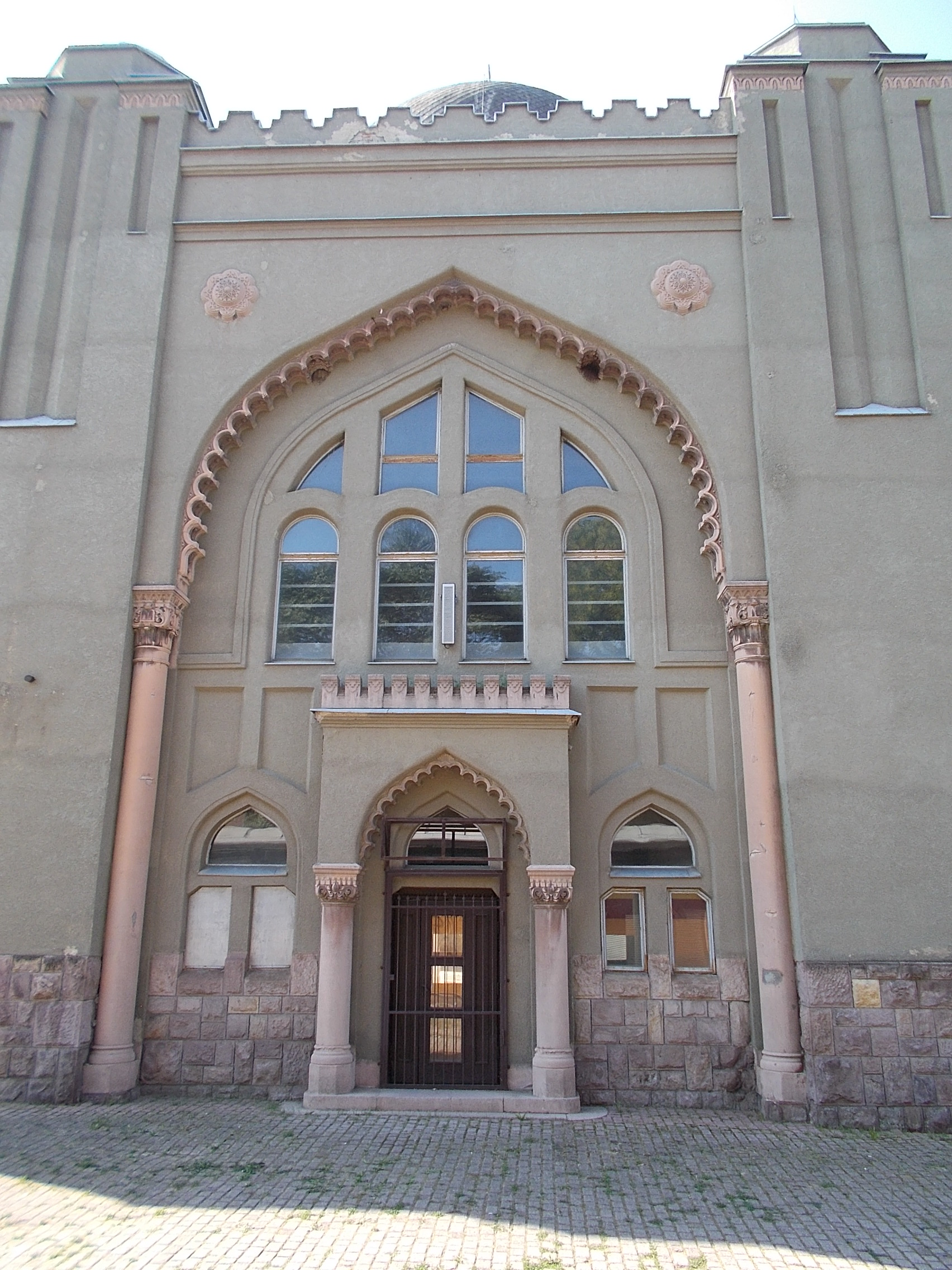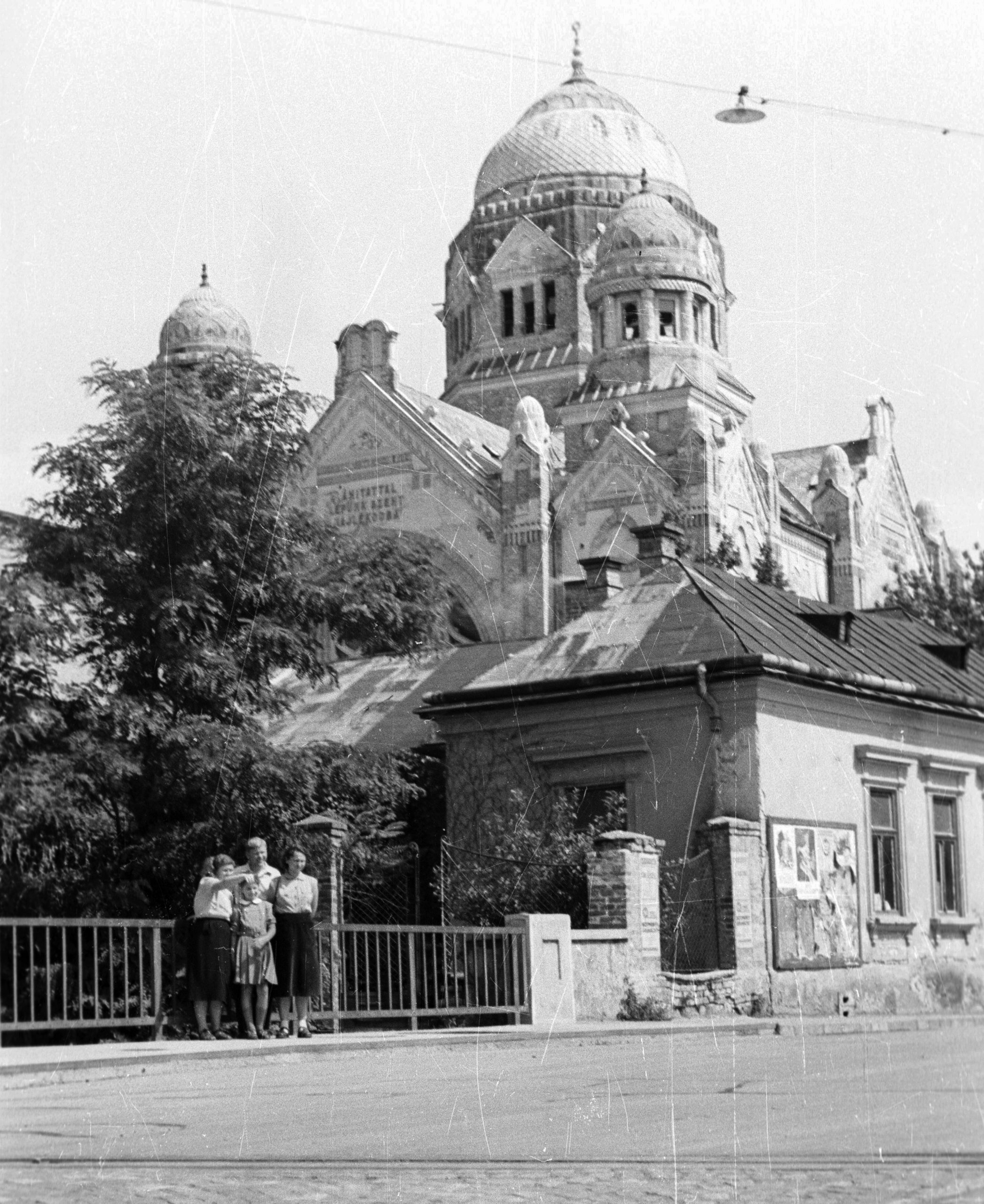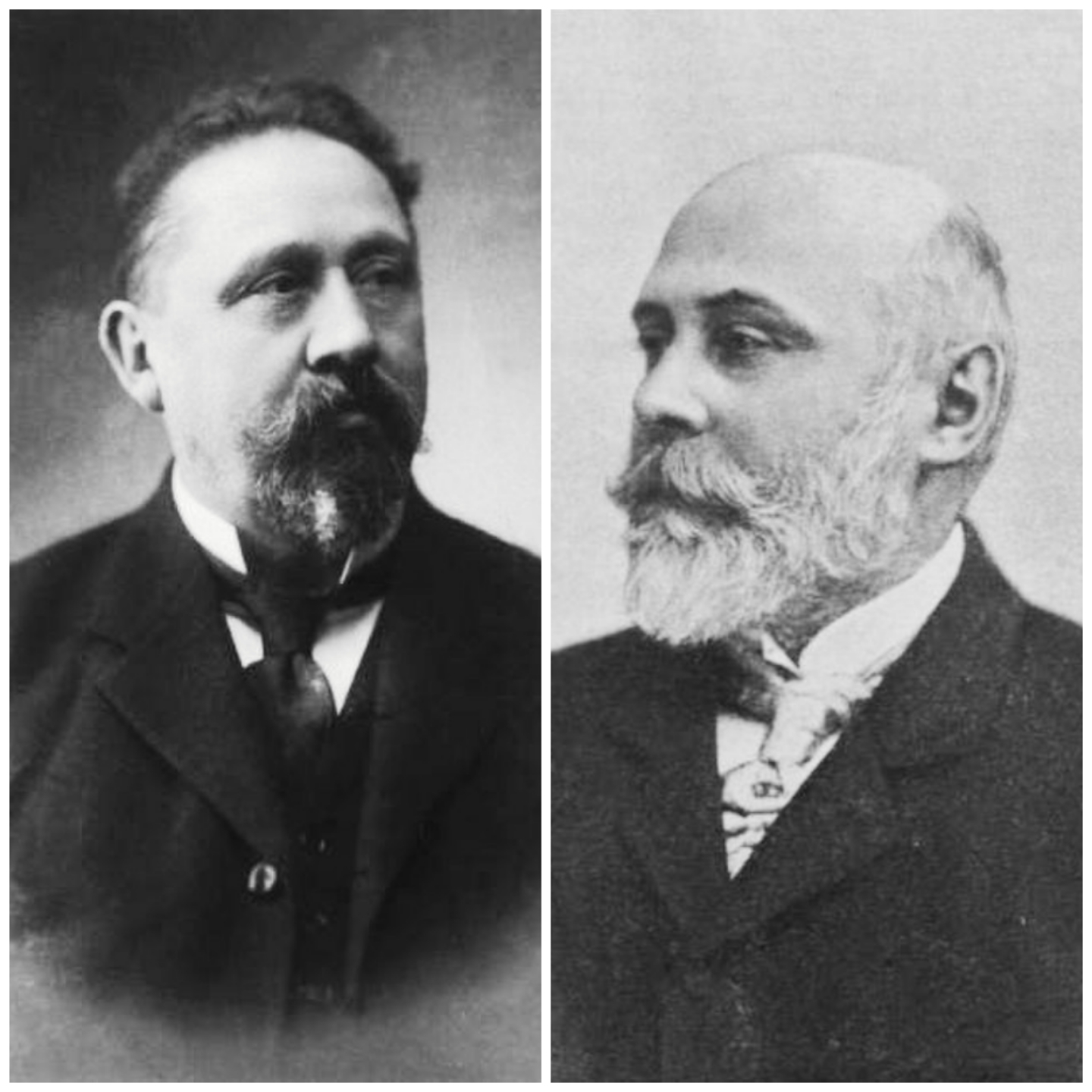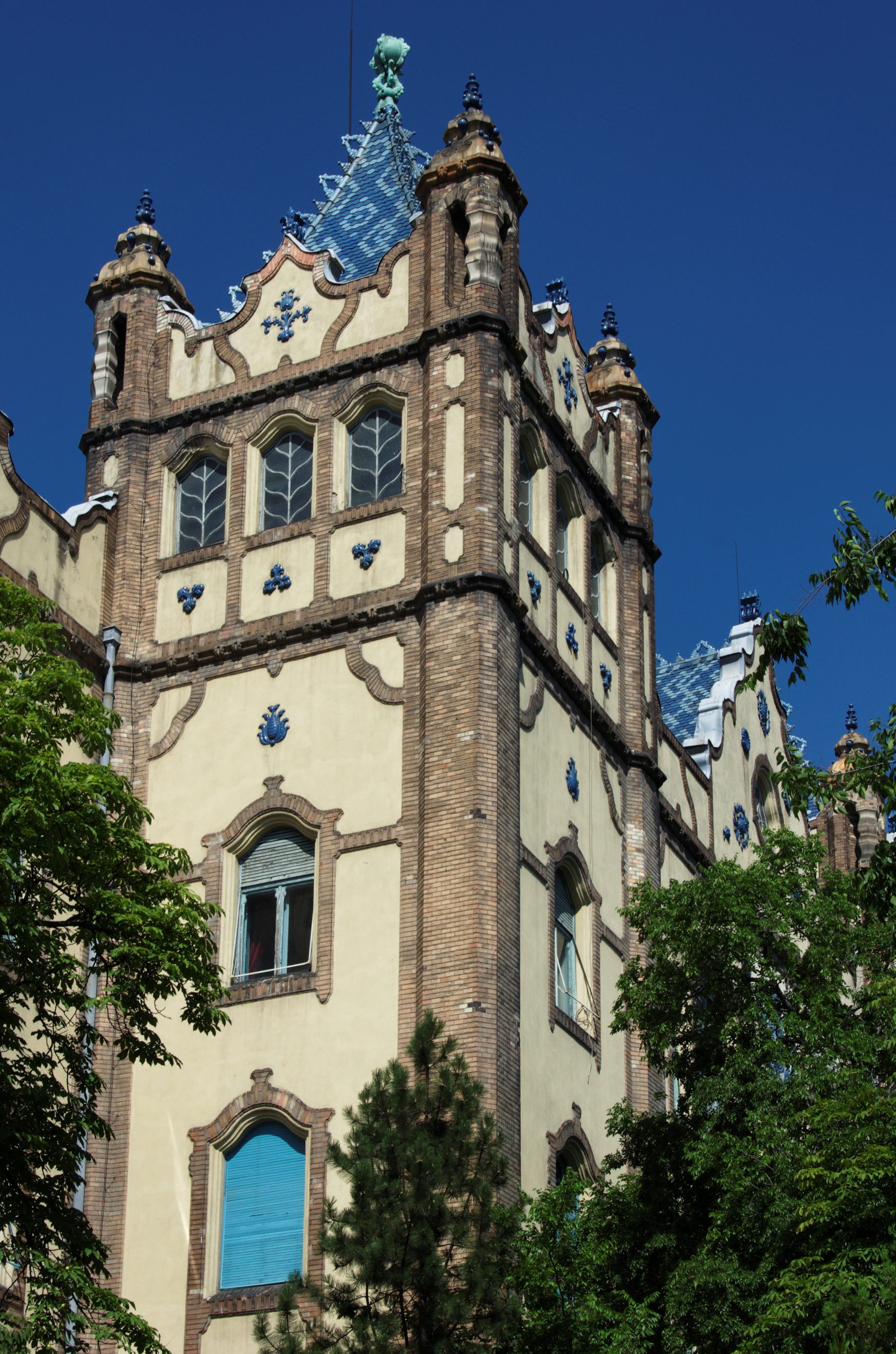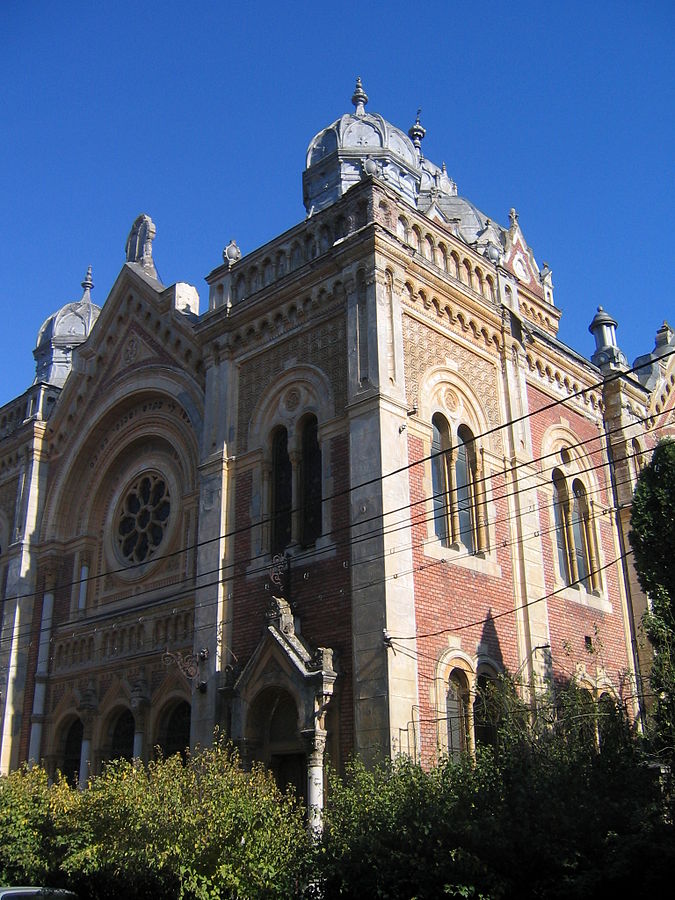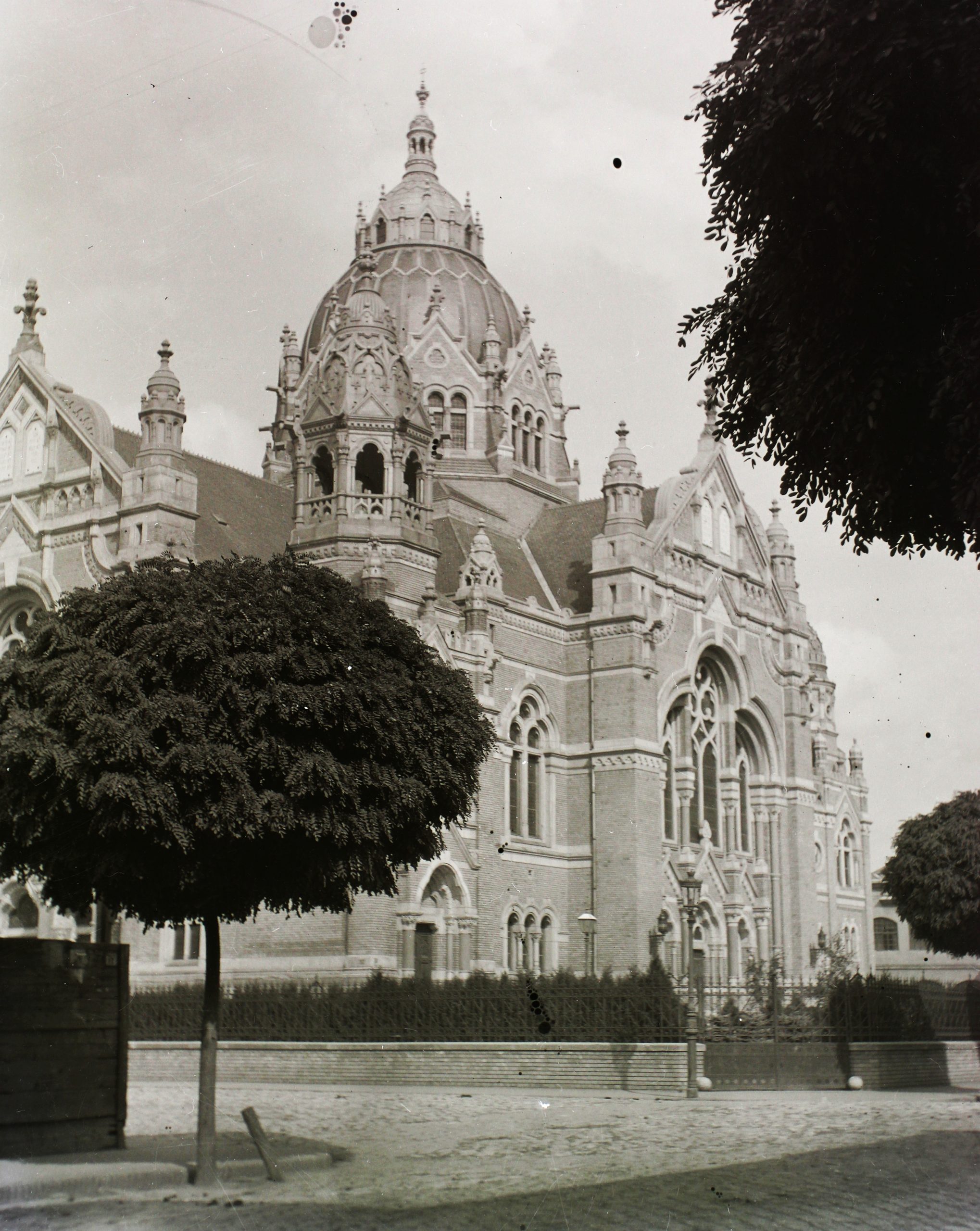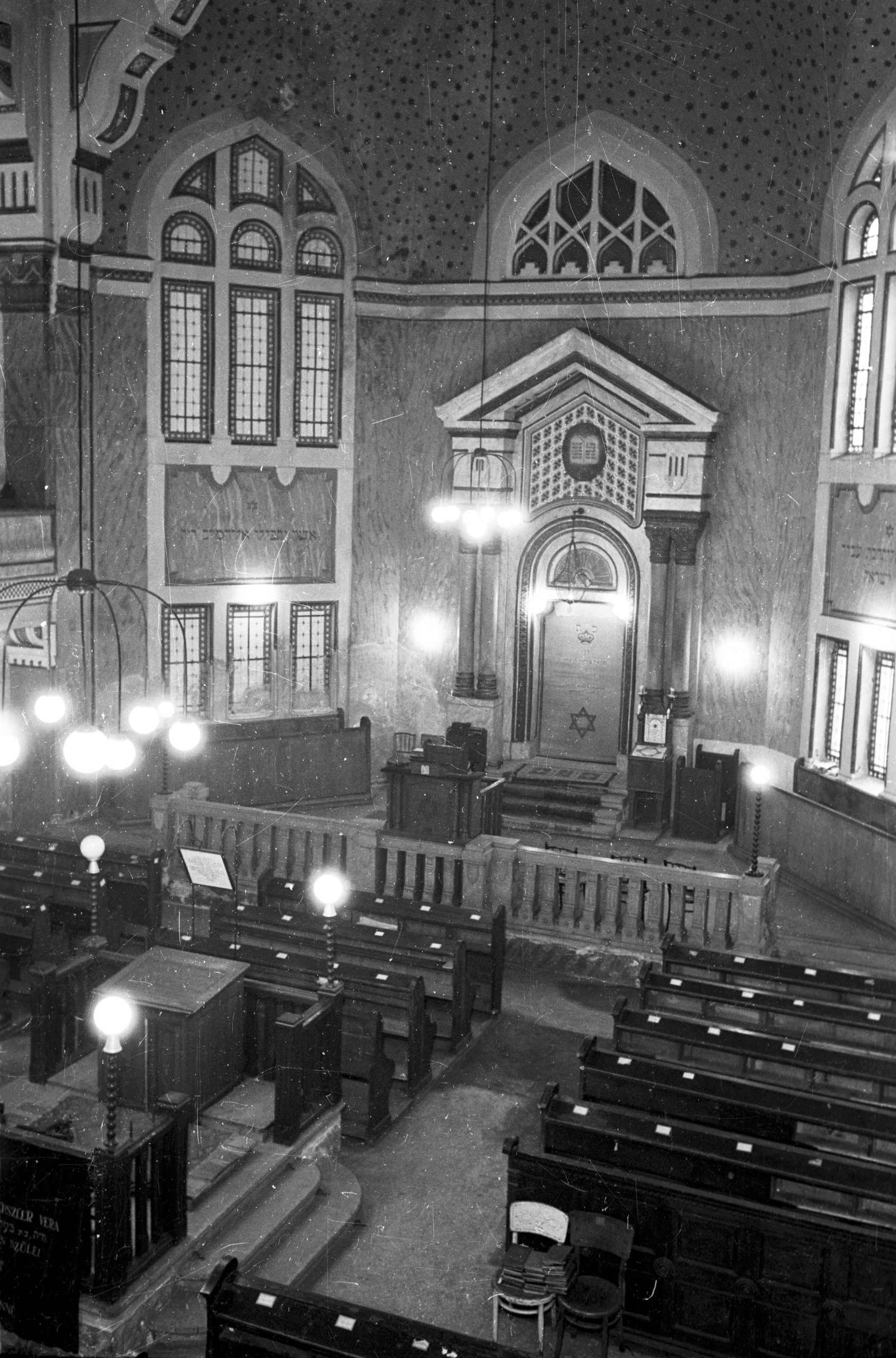1860
He was born on the 28th of December in Kisbér, Hungary.
1870-1883
He went to school in Győr but studied architecture at the Technische Hochschule (College of Technology) in Vienna.
1883
He returned home and worked in the office of Ödön Leichner and Gyula Pártos for twelve years. This period had a significant impact on his entire work.
1894-1899
In this period, he had the opportunity to go on several study trips to Italy where he absorbed the most modern trends of architecture of the era and greatly extended his knowledge.
1888
In this year he received his first major work: he won the tender for the design and the construction of the synagogue in Esztergom.
1894
From this year he worked independently, and later began working with his partner, György Somogyi. He also started to take part in the Budapest school-building programme, as well as building several other educational institutions around the country.
1896
He built the Synagogue in Nagybecskerek. He also designed the Paper and Printing Industry Hall for the Millennium Exhibition in this year. After that he designed numerous Baumhorn Synagogues renowned for being architecturally outstanding.
1898
The Synagogue in Szolnok, one of Baumhorn’s most monumental buildings, was opened. Meanwhile he also had other more “every-day” jobs and his first residential buildings and apartment houses were built in Budapest at 38 József Attila Street in the 8th District and 66 Szív Street in the 6th District.
1899
The Synagogue in Timișoara was built. He submitted a design for the Synagogue in Lipótváros (Leopold Town) in Budapest but it was shelved along with several other of his applications due to a number of architectural debates.
1908-1909
He designed the Synagogue on Aréna Road which has a monumental despite its small size.
1900-1912
He designed and built great bank, office and apartment buildings in Szeged, Timișoara and Novi Sad.
1900-1903
Construction of the Neolog Synagogue in Szeged.
1903-1926
Construction of Synagogues in Cegléd, Szatmárnémeti, Lipótszentmiklós, Novi Sad, Murska Sobota, Makó, Nyitra, Eger and Losonc.
1908
The synagogue in Dózsa György Road, Budapest was built.
1910-1911
The design of the elementary public school in Csata Street, District 13, Budapest
1924
The Synagogue in Páva Street was built in this year based upon his design.
1925–1927
The Synagogue in Csáky Street was extended based on his design.
1929–1931
A more modern Synagogue was built in Gyöngyös with a reinforced concrete structure.
1932
The Synagogue on Bethlen Square, Budapest was opened.
1932
He died on the 8th of July having worked right up to his death.
Lipót Baumhorn designed the fourth largest synagogue in the world, but which one is it?
It is the New Synagogue in Szeged, built between 1900 and 1902, and the second largest synagogue in Hungary, the fourth largest in the world. It is considered to be the most significant and most beautiful creation of the architect, who designed 28 synagogues in all. The building has an eclectic style with art nouveau, Moorish-Arabian-Mediterranean, baroque, gothic and roman stylistic elements. It is one of the most important monuments in the town of Szeged where regular concerts are held thanks to its excellent acoustics, it seats 1340.
Why wasn’t the Leopold town synagogue built (and why it won third place in the tender)?
Although professional debates made the construction of the Synagogue more difficult, the eventual reasons were financial in nature. The designs greatly exceeded the building costs specified (the dome of the winning design itself was planned to cost six million forint). After long periods of planning, the Jewish community rejected the further plans and exchanged the building site for another one next to the Synagogue in Dohány Street in 1907. The Heroes’ Synagogue was later built there. This is why the Leopold Town Synagogue was never built.
Which public buildings in Szeged showcases Baumhorn’s architectural style today?
The architect designed the two-storey art nouveau building for the Szeged-Csongrádi Takarékpénztár (Savings Bank) in 1903-1904, it functions as the office building of OTP Bank today.
He also designed the Headquarters of the Jewish Community (1901-1902), the Wagner Palace with the first lift in town (1904-1905), the Kölcsey Court (1909-1910), the Forbát Building (1911-1912), and the apartment building of the savings bank, the so-called Iron House (1912-1913).
In what ways was the design of the Gyöngyös synagogue innovative or almost revolutionary?
The structure of this Synagogue is of modern reinforced concrete and based upon Baumhorn’s ideas. The usual arches were replaced by modern dome structures on reinforced concrete beams. The result is a beautiful, curvaceous Synagogue with medieval and eastern elements in its details.
Which of Lipót Baumhorn’s works are considered most successful (and what does that success mean)?
Baumhorn’s most successful and modern pieces of work are those where the ornamental elements are less dominant and the typical eastern elements are represented in the huge scale of the building, providing a characteristic effect. Nevertheless, the use of Lechner’s heritage is also presented dominant in his buildings. The architect uses a mature and harmonic language of form in his best work, communicating the spirit of total art that characterises the architects of art nouveau.
A young architect at the junction of two architectural philosophies, in a pulsating and revolutionary era of art
Having finished his studies abroad and returned to Hungary, the young architect encountered two dominant architectural trends of. One was the academic, historical trend accounting for imperial orders, exemplified by Ignác Alpár. The other was that of Ödön Lechner and his company, which included Béla Lajta, Marcell Komor, and Dezső Jakab, who were striving to establish a national style inspired by Hungarian art nouveau and folklore. The young Lipót Baumhorn was able to orientate himself excellently in this complex, pulsating era with its many challenges both as an artist and as a businessman. He predominantly applied his extraordinary skills to building Synagogues during the period of economic prosperity that followed the Austro-Hungarian Compromise of 1867.
The heritage of Ödön Lechner
A few words about the art of his great predecessor, Ödön Lechner: Lechner turned to Hungarian folklore, and to Asian, Persian and Indian ornamental arts in his architecture. In 1891, together with Gyula Pártos, he won the design tender for the Hungarian Museum and School of Applied Arts with the slogan “Hungarians go east!” The exterior decoration of the building of the Museum of Applied Arts (1893-96), the glazed roof tiles, the pirogranite decorative elements, and the perforated flower motives represent Indian, Persian, Moorish and Hungarian folk influences. The entire building differs from the accepted forms of the day. Initially, it had controversial reception, but today it is a reference point for modern Hungarian architecture.
Lipót Baumhorn worked for the Lechner and Pártos architect’s office between 1883 and 1894, a period that significantly influenced his entire career: it was here that he acquired his grandiose style and fluid drawing skills, and the know-how to create delicate, rich detail. His style was greatly influenced by Lechner’s compositions which he completed in an Eastern style, renaissance, baroque, and often art nouveau ornamentation.
Baumhorn and historicising art nouveau
For an architect of synagogues, no matter where and when he lives, the biblical Solomon’s Temple, will always be a major inspiration, the model, the governing force, and a reference for future designs Conceptualising the architecture of ancient Jerusalem and Solomon’s Temple was important for Lipót Baumhorn and his contemporaries, too, and they got it from the archaeological excavations in the middle-East in the 19th century, as well as the magical lyrical-biblical pictures of Moses E. Lilien which presented a wealth of architectural motifs and referenced the origins of ancient Israeli temple-building.
The mature Baumhorn synagogues are characterised by a spacious central floor plan composition with a huge dome, a tympanum facade and the use of Lechner’s brick bands, as well as the classical-Eastern effects. He applied art nouveau, as well as renaissance or gothic styles: he applied elements and motifs but did not use a new form of architecture for the entire structure or the façade, a concept also known as historicising art nouveau. Baumhorn may well be viewed as the greatest figure in our Jewish religious architecture but his worldly architecture is also very significant. He enriched the townscape of four large cities and towns – Budapest, Szeged, Timisoara, and Novi Sad – with his spectacular residential and public buildings.
Many think that he designed the most beautiful synagogue in the world
The Synagogue in Szeged is often referred to as “perhaps the most beautiful Synagogue in the world” in significant technical literature. “It is fantastically wonderful; your head feels dizzy and your breath is caught by its countless complex details” – writes Susan Birnbaum of the Jewish Telegraphic Agency. The Synagogue which had been planned for decades, was opened in 1903, encouraged by and with the active cooperation of Immanuel Löw, the rabbi for Szeged. The renaissance cathedral in Florence, with its rich ornamentation and tectonic dignity, and the roman-gothic cathedral in Pisa with its airiness may be mentioned as its predecessors in the history of architecture.
He is the greatest Hungarian synagogue architect with twenty new and another eight renovated or extended synagogues. He was a successful architect and a successful businessman at the same time. His architecture was not just based on Lechner’s heritage, it also became a fortunate synthesis of the Moorish-gothic character of romanticism and the ornamental practices of international art nouveau. The art nouveau solution of large domed spaces is the real achievement of Baumhorn’s art, establishing a new school.
He almost exclusively designed religious buildings in his later career
His final creative period came after the First World War, when—and not just for Baumhorn—large architectural commissions became scarce. At this time he exclusively designed synagogues: two small ones in the capital, one on Páva Street (1924) and one on Hegedűs Gyula Street (1927), afterwards the one in Arena Street (today’s Dózsa György Street) that had been originally inaugurated in 1909, (1927, created with his son-in-law György Somogyi), in Győr he extended the local Jewish synagogue (1925), and Losonc, Nyíregyháza (1918-1932), and Gyöngyös (1931, with György Somogyi) were also enriched with beautiful Baumhorn synagogues.
In these years Baumhorn returned to the classical architectural tools, using tympanums, engaged columns close to the windows and wall mirrors. And the temple in Gyöngyös, with its cube-shaped structure and reinforced concrete frame, was a harbinger of modern architecture.
1860.12.28 – 1932.7.8


